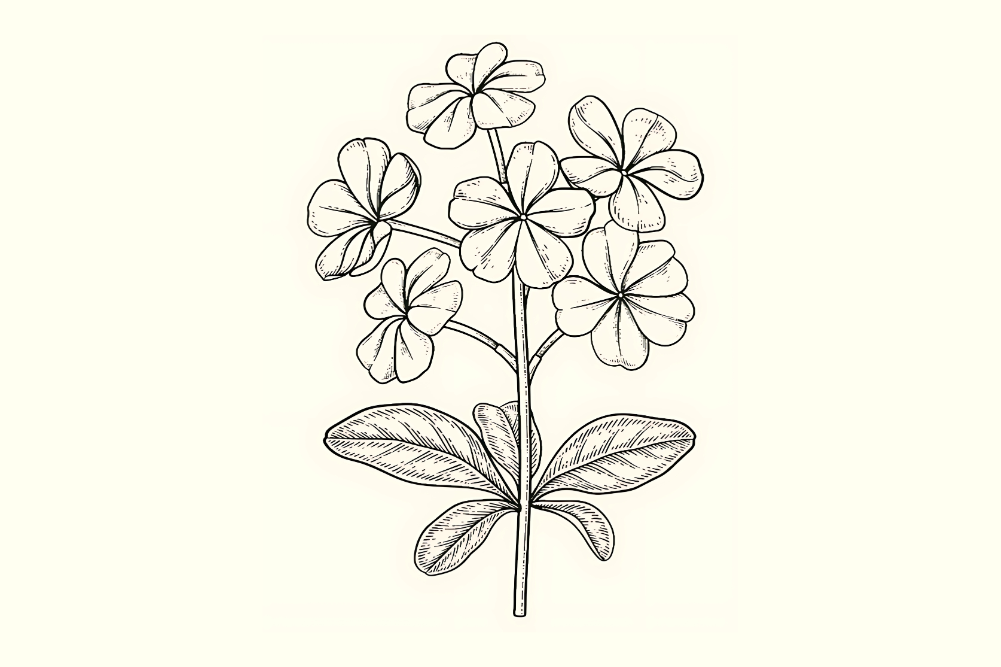Creating Your Own Style And Avoiding Trend Cycles
Cottagecore. Millennial pink. Chubby design. Do any of these words ring a bell? A quick online search of these buzzwords will reveal they are interior design trends that have popped and fizzed within the last 10 years. The words may be new to you, but the trend cycles influence can be witnessed in stores and hospitality spaces, online, in print and possibly even in your home.
For centuries, colours, shapes and patterns have ridden waves of popularity and contributed to the identity of a decade. Tastemakers and revered media outlets were once the gatekeepers of trends across all facets of design, and en vogue styles would slowly filter down to the general public. Today, the relationship between trends and broader society is closely entwined in an increasingly online world of relentless information and inspiration sharing. Neale Whitaker, a highly respected interior design personality and television presenter with a wealth of expertise in publishing, is more interested in learning about why things are suddenly fashionable rather than what is fashionable. “It’s so often an oblique comment on society or culture or a reaction to what has gone before,” he says.
Sydney-based designer Amanda Talbot suggests that design trends reflect societal developments and are a reading of the global mood. Well versed in the business of trends, Talbot’s career spans trend forecasting for international brands such as IKEA and Louis Vuitton, authoring multiple books and designing a slew of homes and high-profile hospitality projects. “Trends come with the zeitgeist of what is happening around us,” she explains, adding that the events covered in the 24-hour news cycle shape individuals’ values and decisions about how they live. “This includes what How tis happening economically, environmentally, socially, advancement in technology, wars and disasters,” says Talbot.
There has been no greater societal shift in our lifetime than the COVID pandemic. “During COVID, people were awakened to the environmental state of the world and the lack of equity with people even in our own neighbourhoods. This meant people were looking for products that supported other people and the planet,” says Talbot. She also notes now that lockdowns are a thing of the past and society has seemingly controlled the virus, people are in a celebratory mood and keen to bring colour, fun and glamour back into their worlds. “It’s a chance to express yourself,” she says.
So are design trends good or bad for society?
The design trend landscape for 2022 reflected society’s need for calming positivity and increasing awareness of climate change. Countless trend reports made mention of nature-inspired colour palettes, artisanal handmade objects and shopping second-hand and vintage. These are all wonderful things that can contribute to a happier household and a lighter environmental footprint.
However, it’s hard to find an upside to the excessive production and promotion of trending products purely for profit-making, where the commercialisation of trends influences individuals to buy mindlessly and think materialistically. “If you happen to love what is currently fashionable, that’s fine, but if you don’t — leave well alone,” Whitaker cautions.
Due to the pervasive nature of social media and the internet’s ability to disseminate information instantly and widely, trends spread quickly and cycle through at a dizzying pace not seen in the past. This focus on buzzy newness and immediacy leads to overconsumption and a throwaway mentality, resulting in excessive waste and overflowing landfills. “Getting caught in a trend cycle is such a terrible place to be for you, the environment and for all of us,” Talbot posits. In addition, when a design trend saturates a market, it can lead to a homogenisation of looks and styles, a “cookie-cutter” effect that renders things monotonous and predictable.
It’s telling that Whitaker and Talbot, who have both worked for acclaimed international design magazines, report they are weary of design trends. Instead, they decorate in ways that are honest reflections of their life and true loves, valuing spaces that are personal and nurturing. “I have always believed our homes tell our stories,” says Whitaker. “I love the authenticity and individuality that comes from choosing things we genuinely love as opposed to things that are merely fashionable.”
When the focus is shifted away from staying “on trend” and confidence in personal style is nurtured, life becomes more meaningful. “I proudly say I am anti-design and more about embracing living,” Talbot enthuses. “The only way to bring soul to a room is to fill it with what you love. Do not to be dictated by current trends because they come and go.” She urges individuals not to be scared about experimenting, which is a sentiment closely held by Whitaker. “The easiest way — of course — is to simply be fearless and go with your heart, but that’s often easier said than done!” he says. Luckily, both experts have shared their top tips on creating a beautiful, meaningful home that tells your story without buying into trends.
Start by looking inward
Not sure how to begin parsing out your personal style? You make decisions daily that reflect your stylistic approach, from the clothes you wear to the things you capture in your photo reel. “Always look for clues around you,” Amanda suggests. “Ask yourself: What do I love in life? Nature, cosiness, glamour? Your favourite place is the Mediterranean? This helps paint a picture and begins your brief.” Look at different aspects of your life and note the key colours, textures and themes that pop up. The beauty here is that there are no wrong answers — how could there be? It’s all about you!
Create a mood board
Mood boarding can help you further define the things you love, pulling them together in a format that is easy to visually digest. Whether using an image curation website like Pinterest or collecting pages from a magazine, go with your gut and pick out the pictures that immediately resonate with you. Collect 10 images of interiors that you are drawn to and analyse the spaces. Take note of any repeating colours, patterns and shapes and observe the amount of light and the presence of nature. The act of selecting and assessing the images will lend you some clarity and focus. Have fun with it!
Layer it up
Most hotels are impersonal by design, stripped to the bare essentials and generic in style in order not to polarise or offend. They are transient, functional spaces that must look untouched and new for arriving guests. Hotel rooms are missing those key indicators that make a space look lived in and soulful — a messy stack of dog-eared books by the bedside; kitchen shelves overflowing with mismatched crockery; hats and jackets hanging by the door.
Layers indicate a human presence, and Talbot knows that the key to creating a soulful home is to embrace those enlivening layers. “Even if you are going for a minimal look, layering with artwork, soft furnishings, textures and lots of table lamps with a soft golden glow will make your room feel so good,” she says.
Whitaker highlights art as a key layering element that stamps a home with a personal touch. In fact, he suggests your walls are a great kick-off point to bring uniqueness to your spaces. “Framing some personal photos or mementos and arranging them gallery-style might be a good place to start. What we choose to display on our walls is often very personal and can be independent of our furniture or soft furnishings,” he says.
Display meaningful objects
The things you collect and hold special offer great insights into who you are. Travel mementos, books, gifted items and hand-me-downs from loved ones are imbued with meaning and have a grounding effect when displayed in your home. They are reminders of where you’ve been and who you are and indicate your dreams for the future. These objects are unique to you, and proudly displaying them reinforces a sense of self and infuses the space with your individuality.
Give a bookshelf over to your collection of teapots, group collected feathers in a jar and pop it on the coffee table, or cover a wall in vintage shop signage, if that’s your thing! If you embrace the things you love and weave them into your surroundings, your spaces will feed back feelings of support and comfortable familiarity.
Experiment with colour
Colour is a powerful tool in the interior and product design worlds. It is scientifically proven that colour influences psychological and physiological states, and how we use it in our homes directly impacts our emotions. The tolerance levels for hues differ from person to person — some individuals may be overwhelmed by saturated colours, while others will find neutral walls uninspiring.
Colour preferences are entirely personal, shaped by our memories and experiences. When choosing colour palettes for your interiors, look to your mood board or follow your instincts. Don’t rely solely on colour trend reports; if a paint retailer tells you a particular colour is popular, take it with
a grain of salt.
If you are hesitant to splash a statement colour across your walls, Whitaker suggests adding accents of a favourite colour throughout the home. Add your chosen hue in small doses, assess how it makes you feel, and keep adding until you find a comfortable balance. That’s the only rule here — go with what makes you feel good.
In her book published in 2014, Happy: Creating Joyous Living Spaces Through Design, Talbot writes, “When you use colour with confidence, it says something about your character. You are showing that you are strong, capable and something that many others long to be. Believing is the key to living it.”
Shop mindfully
“We really do need to find confidence in what we love and consciously purchase,” says Talbot, highlighting a salient aspect of this discussion. Shopping with intention plays a significant role in creating a beautiful home that is authentically “you”. Try to take an objective view of pervasive advertising messages and marketing images and recognise them as the seductive sales tool they are designed to be.
Always ask yourself the following questions before making a purchase:
- Will it bring me long-term joy?
- Is it well made and likely to last?
- Do I already own something similar that serves the same purpose?
- Am I shopping because I am bored, angry or stressed? Does my body and mind need something other than this right now?
The greatest test involves delaying your purchase and walking away. Reassess your feelings toward the item in 24 hours and, if you are still enamoured, it is meant to be!
Keep playing
An autobiographical home evolves and shifts as the homeowner does. Arrange your things in a way that makes you happy, and then rearrange it all when you feel like an update. Repurpose discarded items or reinvent older pieces with coats of paint or new upholstery. Changing the colours, adding in new-found pieces and donating things that no longer bring you joy are all part of nurturing a space that is truly your own. If you view your home as a laboratory where you are free to play and express yourself, you are more likely to make changes. Hesitations will melt away the more you play, giving you the confidence to celebrate your own style and leave the trends behind.







